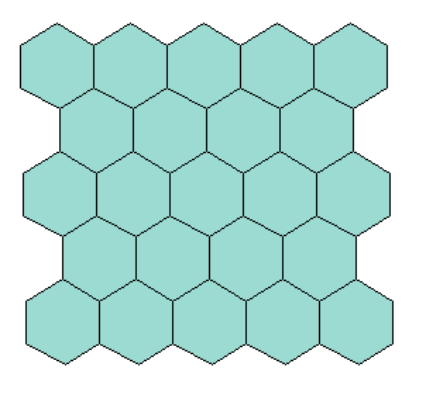
Tessellations
Example of the start of a hexagon tessellation!
Using a hexagon base to create a cool tessellation!

This project was so much fun! I learned what a regular tessellation is, and how the artist M.C. Escher used them to create some of his amazing artworks! [b]A tessellation[u] [/u][/b] is a pattern of geometric shapes that fit together perfectly on a plane without any gaps or overlaps. Tessellations also repeat a discernible pattern. Can you see the repeating face, hat, and ears in my tessellation above? [br]Polygons like the triangle, square, and hexagon are often used to create regular tessellations because they fit together perfectly. Conceivably, they could go on into infinity! In this project, I learned how to create a tessellation using a hexagon (the six-sided polygon.) [br]A hexagon is a polygon with six sides and six equal angles measuring 120 degrees. Note that for a regular shape to tessellate, the angles would have to meet together and not leave any gaps. (Please note: The two tessellations I created above do not have perfect angle measurements because I played a lot with the shape of my face and head, thus changing the congruence of my hexagon measurements. See the third example for a perfect example.) [br]Because the total number of degrees in a circle is 360 degrees, this means that the angle measure would need to be a divisor of 360. This is why regular polygons like a hexagon are often used for tessellations. (To find the angle measure of a regular polygon, the formula (n-2)*180 can be used to find the total sum of the interior angles, where n is the number of sides!)
True or False
Tessellations must have no gaps or overlaps.
True or False
A circle can tessellate.
What three polygon shapes are most commonly used in regular tessellations?
Where in everyday life might you encounter a tessellation?
What is a plane? (In math language! Not a flying object ;)
Could a tessellation go on and on into infinity??
What is a vertex?
Is this a tessellation?
[img]https://cdn.pixabay.com/photo/2013/07/12/18/56/colors-154048_1280.png[/img]